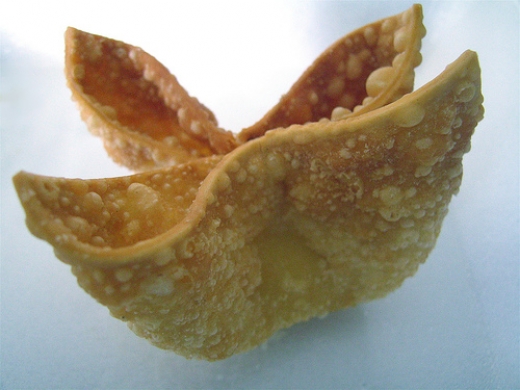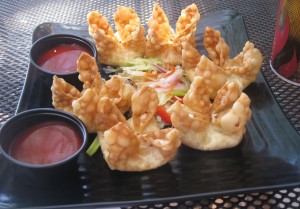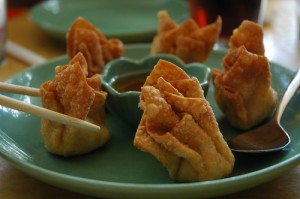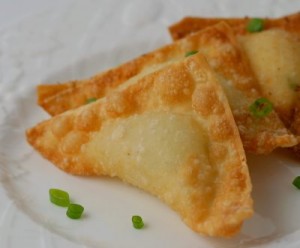When I first started cooking and really getting into food, my go to resource was Alton Brown’s Good Eats. If you’re a regular reader, you know we’re all fans of the show and see it as one of the better resources for food information available. No where else, especially on TV, can you learn more about food in such a short amount of time. I think the best part about the show is that he takes a simple concept, such as an omelette, and provides you with way too much information. So much that on every episode you usually pick up at least 5 or 6 things that you didn’t know before. It was this show that inspired me to look more into concepts related to food, exceeding normal techniques such as following recipes. I became interested in history and science of all things food.
This being said, I want to welcome you to a new segment of Epic Portions called Everything you Ever Wanted to Know. Every week I will provide you with way too much information about a certain food item that I like. It’s as simple as that. This week, we look into Crab Rangoon. Why? Because I ate crab Rangoon yesterday and they were delicious.

The Basics
If you’re not familiar with the deliciousness that is crab rangoon, they are deep-fried dumplings that are stuffed with a combination or cream cheese, flaked crab meat, and usually seasonings. Seasonings vary to include garlic, steak sauce, soy sauce, season salt, and onion powder. In most recipes the ingredients are mixed together and then placed by spoonfuls onto prepared wonton wrappers. The wonton wrappers are then folded into several different shapes and deep fried in vegetable oil until they are golden brown. It’s then served with a plum sauce, sweet and sour cause, or mustard for dipping.
There are variations of the crab rangoon recipe that include omitting the crab meat and using only seasoned cream cheese, which makes the dish suitable for those with shellfish allergies, and baking the stuffed wonton instead of deep frying, which omits the grease. Usually, the baked version of crab rangoon utilizes a muffin pan to stabilize the wonton while baking.
Crab rangoon is usually served as an appetizer of American Chinese cuisine.
The History
It’s not exactly known what culinary genius cooked the first “Asian style” crab rangoon but cheese, especially of the cream cheese variety, is basically nonexistent in Southeast Asian and Chinese cuisine. The credit is usually given to Victor Bergeron, founder of the Trader Vic’s tiki restaurant chain, where crab rangoon first appeared on their menu in the 1950s, and was listed on the menu as an old Burmese recipe. But once again, when was the last time you saw any kind of cheese in Asian cuisine? He is also credited with the invention of the Mai Tai tropical drink, and with the pupuu platter of appetizers. Although the cocktails were always the biggest attraction, tiki restaurants such as Trader Vic’s were also known for their unique, Asian-inspired fare, invented to approximate traditional cuisine on Polynesian islands.
Others argue that crab rangoon was invented for the World’s Fair in St. Louis, Missouri, held in 1904. Countless modern dishes have been introduced at World’s Fairs over the past two centuries, although little evidence exists that something comparable to today’s crab rangoon was served there in 1904.
It is worth noting that the city of Rangoon, which is actually known as Yangon, was the capitol of Burma until 2000 and still remains its largest city. The word “Rangoon” most likely comes from the British imitation of the pronunciation of “Yangon”. The British seized Yangon in the Second Anglo-Burmese War of 1852 and transformed it into the commercial and political hub of British Burma. It was under heavy British influence until 1948 when the country regained independence from the British Empire.
Yangon remains the site of extreme Burmese nationalism, with many colonial names of streets and parks changed to more nationalistic Burmese names. To this day, Western history books have ignored these changes. It is highly unlikely that anything food named “Rangoon” is served there. Unless, perhaps, they changed its name to Crab Yangon, tortured it a bit (it is, of course, boiled in oil), and then slapped a uniform on it after it had been sufficiently “retrained.” Nope, Crab Rangoon is a more than likely a uniquely American concoction– one that takes a little bit of this culture (wontons are Chinese), and a little bit of that one.
Appearance
The construction of ingredients is simple, but the folding of the wonton wrapper offers you a chance to practice some food oragami. Aside from wee variations in the ratio of crab to cheese in the filling, the biggest difference from restaurant to restaurant is the way the crab rangoon’s wrapper is folded. I am sure there are countless other ways to fold the the wrapper, but the following are the free most accepted techniques.
- The Four Corners Method – In the ‘four-corners’ method, the cook places a small dollop of filling in the wonton’s center, then pinches it each corner and gathers in the middle. With this method, you get more crunch and a little less filling and soft wonton. If you’re doing this at home, be careful not to over fry. It can turn the wonton hard and ruin the fun.
- The “Clutch Purse” Method – The ‘clutch purse’ method goes the other way on the crunch/soft scale. With this method, the wonton gets a larger dollop of cream-cheese filling. The wonton itself is also pinched closed near the edge in a straight line, so that the finished rangoon looks like a lady’s handbag.
- The Triangle Method – The triangle method consists of simply placing the ingredients into a triangle shaped wonton wrapper, placing another triangle shaped wonton wrapper on top of that, and folding so that the ingredients are contained.
How to Make Them
Ingredients:
- 1 lb. sea legs or any chunk artificial crab meat
- 2 (8 oz.) pkgs. cream cheese, softened
- 4 oz. seafood spread (optional)
- 1 bunch scallions, chopped (about 6 – green part too)
- pinch of salt
- 1 tsp. sugar
- 1 pkg. wonton skins
- 1/4 tsp. onion powder
- oil for deep frying
Place crab meat, cream cheese, seafood spread, scallions, salt, onion powder and sugar into food processor and mix into a lumpy paste. If food processor is not available, chop crab and onions very fine and mix with softened cream cheese, salt, and sugar. Place teaspoonful of mixture in middle of a wonton skin. Moisten edges and and fold into which ever technique you find suitable. Make sure all edges are sealed. Deep fry until golden brown. You can also bake these, but how much fun is that?



